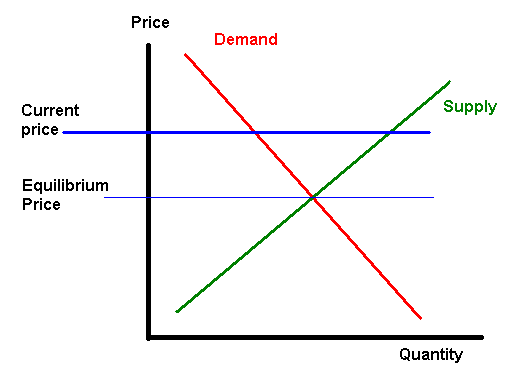Each question is worth 4 points, except for question 0.
Do enough questions to get the grade you want. Please see the table to the right. ⇒
You may do extra questions, for insurance, in case you get partial credit for some answers.
Some answers may be short. Others may be as long as a weekly comment.
To get full credit for an answer, use course concepts. Refer to course articles, if the question asks for that. Citations of articles can be brief -- the author's last name and an abbreviated title is sufficient.
Submit your completed exam with Blackboard's feature.
0. (2 points) What was the best single item on the reading list for you? (You don't have to say why.)
1.
2. The following is an example of what concept from week 2?
Heidi Steffen and her husband used to treat themselves most weeks to steak at Sodak Shores, a restaurant overlooking a lake near their hometown of Milbank, S.D. Then they each got an iPhone, and the rib-eyes started making fewer appearances. "Every weekend, we'd do something," said Ms. Steffen, a registered nurse whose husband works at a tire shop. "Now maybe once every month or two, we get out." The Wall Street Journal, Sept. 26, 2012, p. B1.
3. What is the Law of Diminishing Returns? Give an example, from an assigned article, that illustrates this "law."
4. Tell me about an article that we read that uses the concept of marginal or incremental cost. How does it use the concept? To make what argument?
5. In Axnick's article about measles, the authors discount future costs and benefits (costs averted).
6. Describe a way to put a dollar value on a saved life.
For 2 points extra credit, describe a second way to put a dollar value on a saved life.Then discuss whether you think it is proper or useful to use such a value in making decisions about which public health, safety, or health care procedures to use. Show that you understand why some economists advocate doing this, even if you don't like the idea.
7. Each of the following is discussed in an article on the syllabus:
Pick one. For that one, tell me whether doing it for everybody (of the relevant age and gender) reduces or increases total spending on health care. Explain your answer.
8. Why do Fries et al argue that doing more prevention would reduce health care costs in the US? What kind of evidence do they use to support their claim? What is Russell's counter-argument? What kind of evidence does she use to support her argument? Can prevention be a good idea, even if it doesn't save money?
9. What is an "external" cost or benefit?
Then consider these:
10. Is it true or false that risk averse people only take gambles that have a positive expected value for them? What does this have to do with why people buy insurance?

11. The diagram shows a supply curve and a demand curve. The current price is shown. It is well above the equilibrium price.
12. Explain briefly what elasticity is. Then answer this, showing your math: If a pack of cigarettes sells for $5.00, and the government adds a new tax to raise the price by $2.50, and if the elasticity of demand for cigarettes among teenagers is -0.5, by what percentage will teenagers' use of cigarettes fall? (You may make your calculation simpler by not using the arc elasticity idea. Instead, take the current $5.00 price as the price level in the elasticity formula.)
13. What do economists mean when they say that the doctor is the patient's "agent"? Why do I need my doctor to act as my agent?
14. Malcolm Gladwell, in his New Yorker article, writes that it's a "myth" that moral hazard is a big reason why health care spending is so high in the U.S.
15. What do economists mean by "efficient?" How does that differ from ordinary usage? Is it always better for everybody if we are more efficient, as economists use the term? Why or why not?
16. What is a "public good?" What is a "free rider"? For each, give a brief example. The example can be from the readings or from your knowledge and experience. Be careful that you are using these terms the way economists use them.
17. Let's go through the first part of Bodenheimer and Grumbach, "Paying for Health Care." There is a new link on Blackboard in the Content section that will take you directly to a PDF copy. One or two sentences should be enough for each of the following. Keep it simple and brief.
The views and opinions expressed in this page are strictly those of the
page author,
. The contents of this page have not been reviewed or approved
by the
University of South Carolina.
Warning! Reading tiny print may cause myopia. Too late! You are reading this!